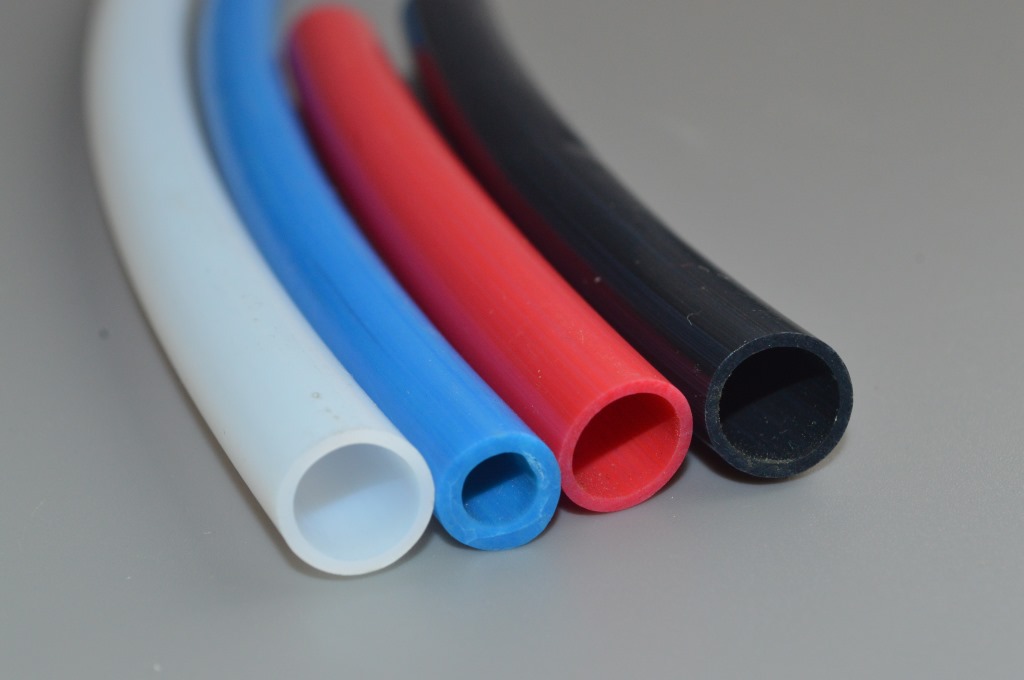
The cable insulation is a non-conductive material, or a material resistant to the flow of electric current. It is often called a dielectric in radio frequency cables. Insulation resists electrical leakage, prevents the wire’s current from coming into contact with other conductors, and preserves the material integrity of the wire by protecting it against environmental threats such as water and heat. Both the safety and effectiveness of the wire depend on its insulation.
Following is a simple explanation of rubber insulation with information on the typical uses, advantages, and disadvantages of each option.
Rubbers
Thermoplastic Rubber (TPR)
In many applications, TPR is used to replace true thermoset rubber. It has improved colorability, higher processing speeds, and a wider usable temperature range. It also displays excellent heat, weather, and age resistance without curing. TPR is not cut-through resistant but can be used in applications where other properties of rubber are preferred.
Neoprene (Polychloroprene)
This is a synthetic thermoset rubber that must be vulcanized to obtain its desired qualities. It exhibits supreme abrasion, cut-through, oil, and solvent resistance. Neoprene is also known for its long service life and wide range of temperature and usability. It is remarkably flame retardant and self-extinguishing. >Military products often incorporate Neoprene. This material is especially desirable for hand-held cord sets.
Styrene Butadiene Rubber (SBR)
This is a thermoset compound with qualities similar to Neoprene. It has a temperature range of -55°C to 90°C. SBR is primarily used in Mil-C-55668 cables.
Silicone
This material is extremely heat resistant and flame retardant and can be used in temperatures up to 180°C. It is moderately abrasion resistant. Silicone is also extremely flexible. Benefits include a long storage life and good bonding properties necessary in many electrical applications.
Fiberglass
Fiberglass is the most widely used glass insulation. It can be used continuously in temperatures up to 482°C. This material is moisture and chemical-resistant, but only fairly abrasion resistant. Its typical applications include heat treating, glass and ceramic kilns, foundries, and extensive applications in aluminum processing.
Ethylene Propylene Rubber (EPR)
EPR is known for its excellent thermal characteristics and electrical properties, allowing a smaller cross-sectional area for the same load-carrying capacity of other cables. It is commonly used in high-voltage lines. The flexibility of this material also makes it appropriate for temporary installations and applications in the mining industry. These rubbers are also valuable for their heat, oxidation, weathering, water, acid, alcohol, and alkali resistance. EPR can be used in the temperature range of -50°C to 160°C. EPR is not as tear resistant as other insulation options. It is also relatively soft and may require more care during installation to avoid damage.
Rubber
Rubber insulation generally refers to both natural rubber and SBR compounds, each available in a variety of formulas for use in a wide range of applications. Because formulas vary, so do temperature ranges and some other basic characteristics. While this type of insulation has poor oil and ozone resistance, it exhibits good low-temperature flexibility, good water and alcohol resistance, good electrical properties, and excellent abrasion resistance.
Chlorosulfonated Polyethylene (CSPE)
CSPE works well as low-voltage insulation. It is known for its ability to perform through a wide temperature range as well as for its resistance to chemicals and UV rays. This cable insulation material can be found in appliances, lead, coil, transformers, and motor lead wires. Chlorosulfonated Polyethylene is sometimes referred to as Hypalon, a registered trademark of Dupont.
Ethylene Propylene Diene Monomer (EPDM)
This synthetic rubber insulation displays outstanding heat, ozone, weather, and abrasion resistance. EPDM also exhibits excellent electrical properties. Further benefits include excellent flexibility at both high and low temperatures, from -55°C to 150°C, as well as good dielectric strength. EPDM replaces silicone rubber in some applications.